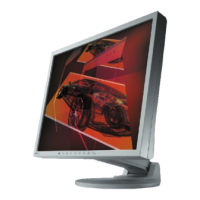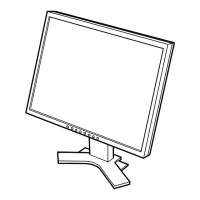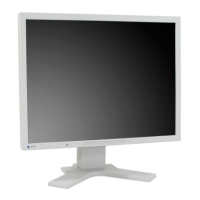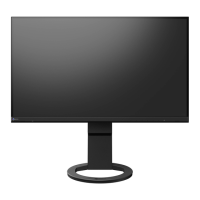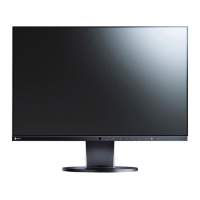23
Chapter 5 Troubleshooting
Chapter 5 Troubleshooting
5-1. No Picture
Problem Possible cause and remedy
1. No picture
• Power indicator does not light up.
• Check whether the power cord is connected properly.
• Press
.
• Power indicator is lighting white. • Increase “Brightness”, “Contrast”, or “Gain” in the Setting menu
(see “Color Adjustment” (page 14)).
• Power indicator is lighting orange. • Switch the input signal.
• Move the mouse or press any key on the keyboard.
• Check whether the PC is turned on.
• Depending on the PC and graphics board, the input signal may
not be detected and the monitor may not recover from power
saving mode. If the screen is not displayed by moving the
mouse or pressing keys on the keyboard, perform the following
procedure. This may resolve the problem.
1. Press
to turn off the monitor.
2. While pressing the leftmost switch, press
for more
than 2 seconds to turn on the monitor. The “Administrator
Settings” menu appears.
3. Select “Compatibility Mode”.
4. Select “On”.
5. Select “Apply” and then
.
6. Reboot the PC.
• Power indicator is ashing orange. • This symptom may occur when the PC is connected to the
DisplayPort connector. Use a signal cable recommended by
us for the connection. Turn the monitor off and on.
2. The message below appears. This message appears when the signal is not input correctly even
though the monitor is functioning properly.
• The message shows that the input signal
is out of the specied frequency range.
Example:
• Check whether the PC is congured to meet the resolution and
vertical scan frequency requirements of the monitor (see “1-2.
Supported Resolutions” (page 7)).
• Reboot the PC.
• Select an appropriate setting using the graphics board’s utility.
Refer to the User’s Manual of the graphics board for details.
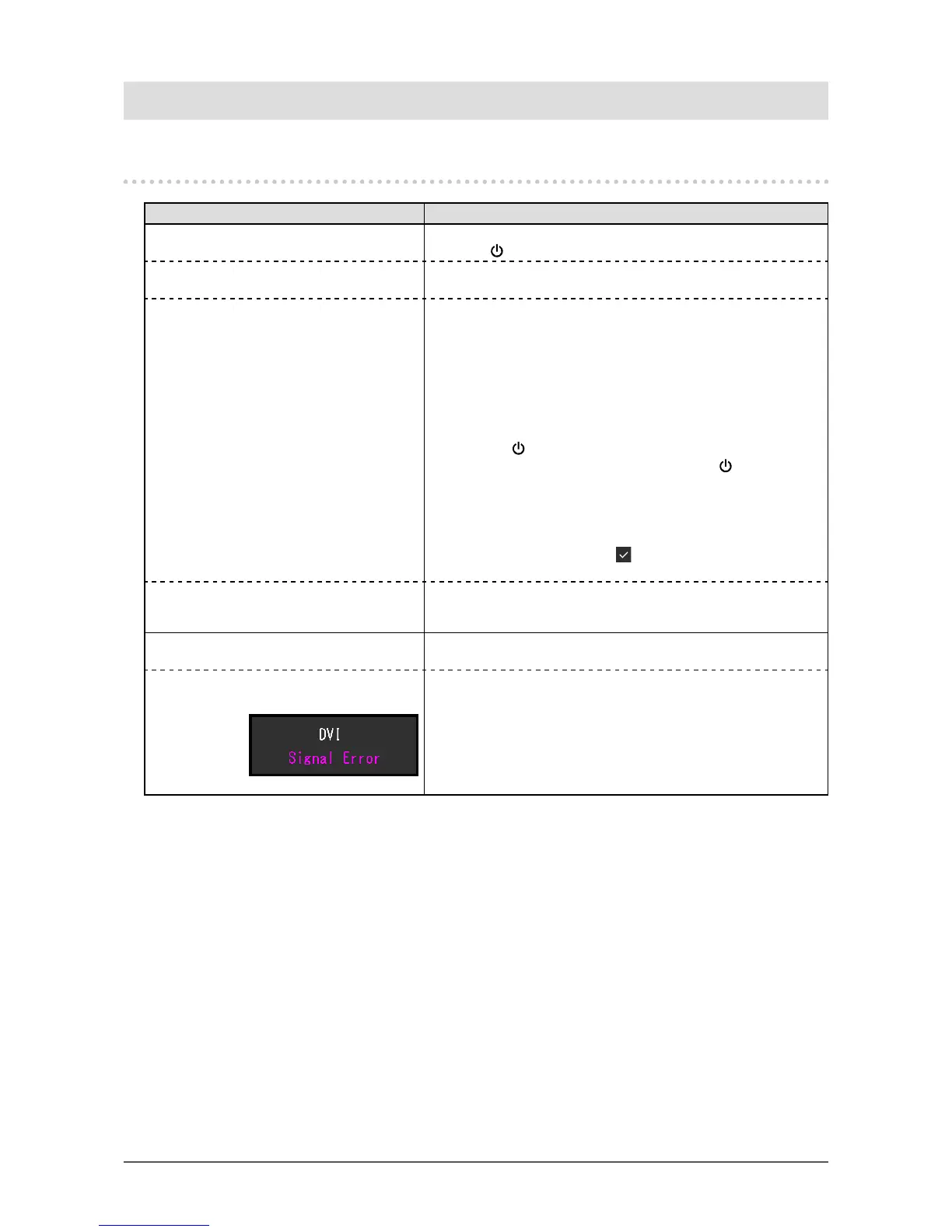